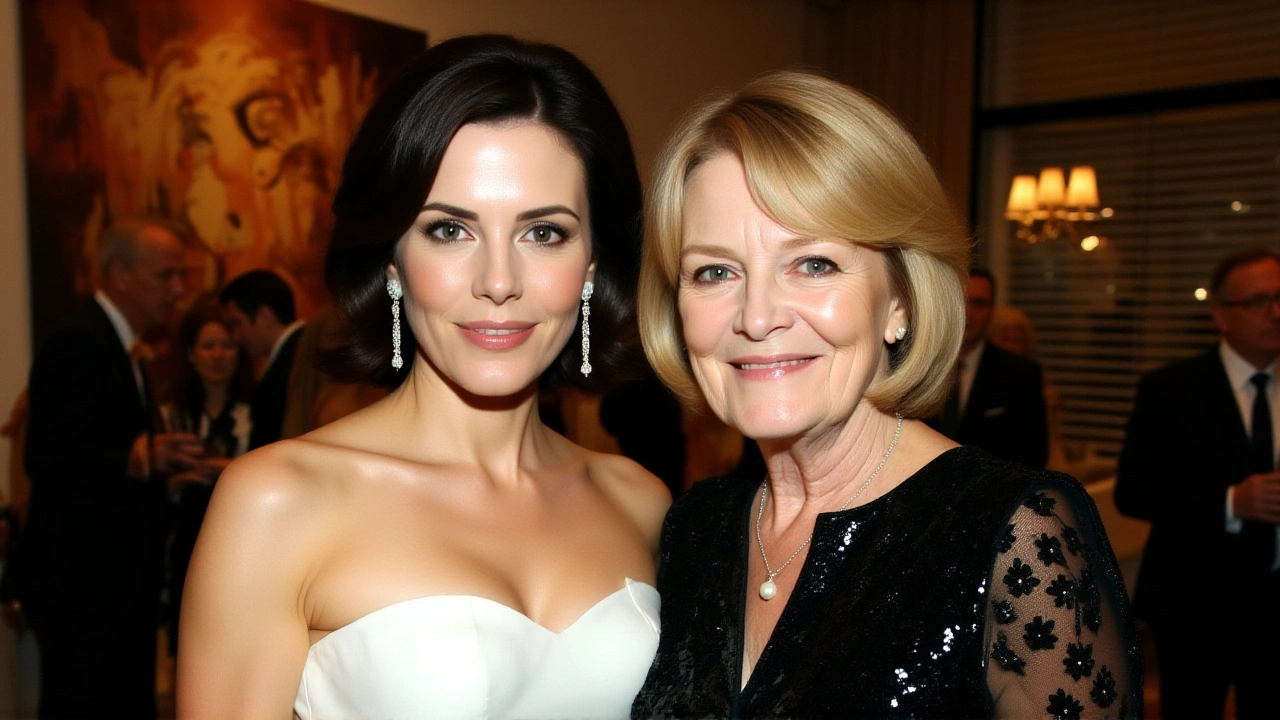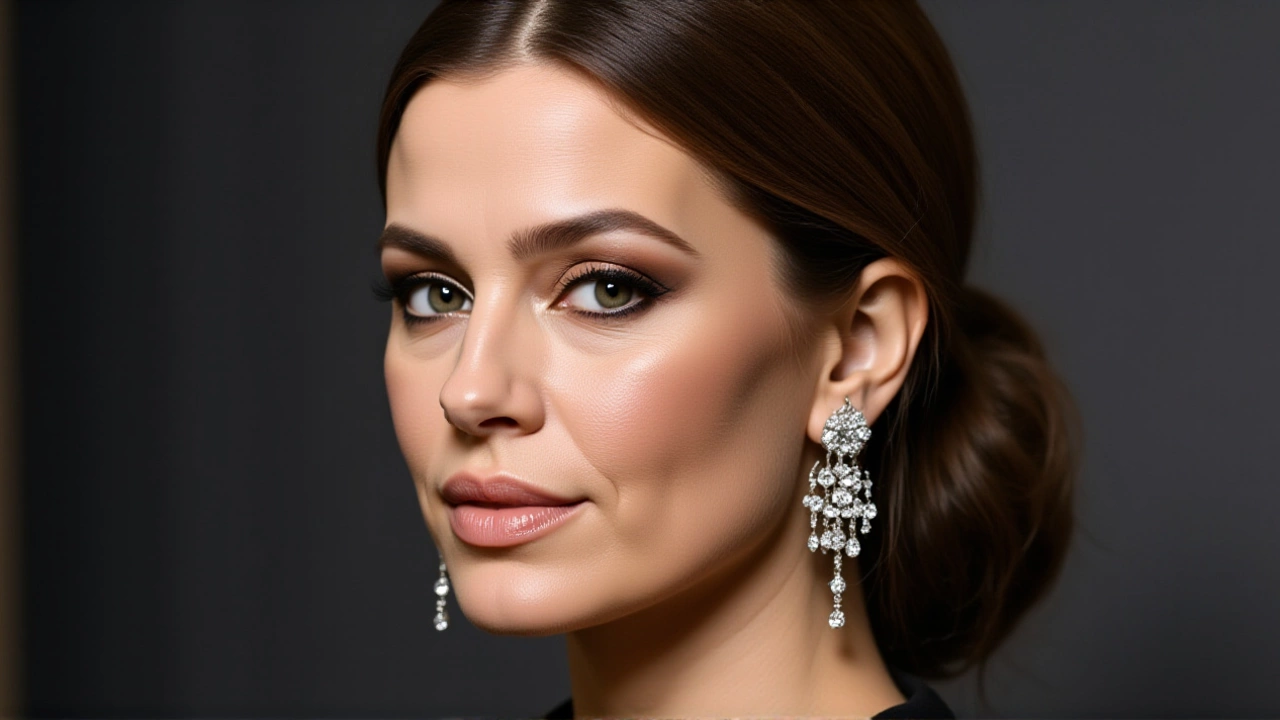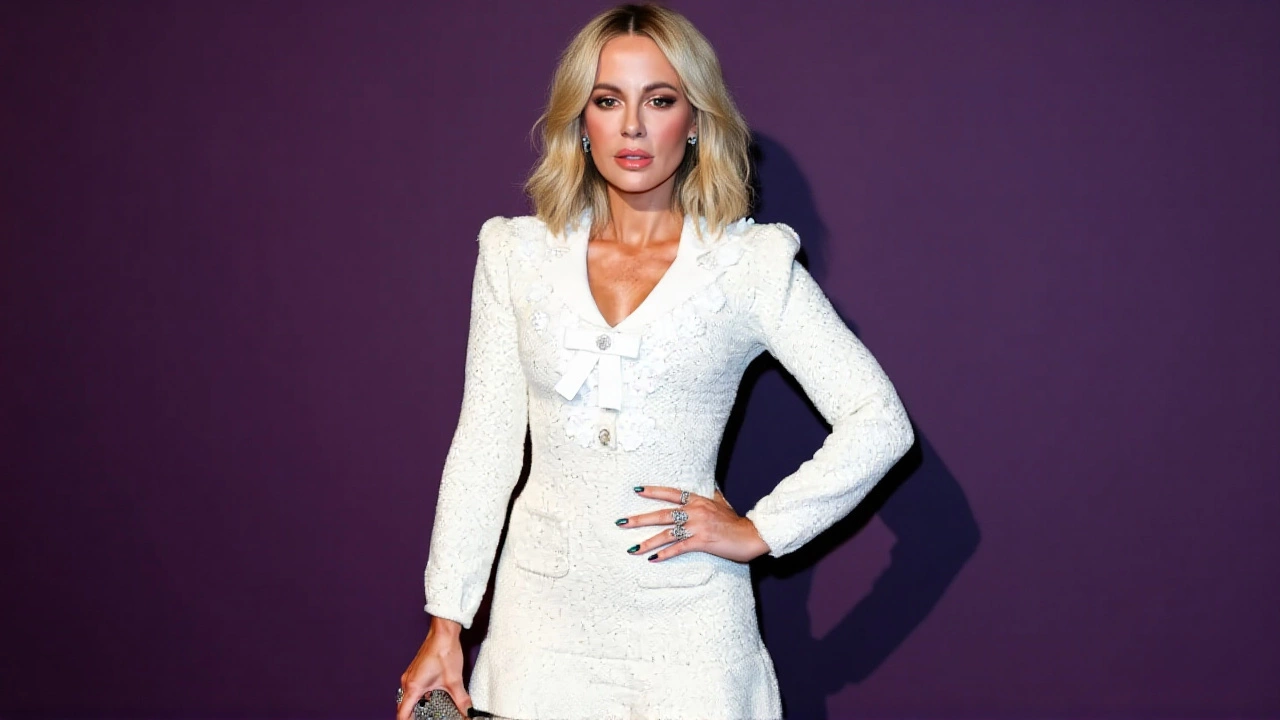When Kate Beckinsale posted a carousel of tattoos on Instagram on November 21, 2025, fans didn’t expect a portrait of her late mother — or a fox. Or the words "Fatherless scum" curled above it like a dark joke whispered in a funeral parlor. But that’s exactly what they got. The British-American actress, known for her icy charisma in Jolt and Canary Black, unveiled a deeply personal, visually complex tattoo honoring Judy Loe, her mother, who died of cancer on July 15, 2025, at age 80. The tattoo isn’t just a tribute. It’s a story. A very British, very dark, very human story.
A Tattoo That Tells a Family Story
The centerpiece is a black-and-white ink portrait of Judy Loe, rendered in fine linework, taken from a 1971 still of her role in the British children’s fantasy series Ace of Wands. She’s perched on a stool, wearing a slim long-sleeve top, hot shorts, and knee-high white Go-go boots — the kind made by Courrèges in the early ’70s. Perched on her shoulder? A fishing owl named Fred, a live prop from the show’s Malayan-set scenes. The image isn’t just nostalgic. It’s specific. It’s the version of her mother that Beckinsale remembers from childhood, watching reruns on a grainy TV in London. Above the portrait, in elegant cursive: "Fatherless scum." No explanation. No context. Just those words, raw and unapologetic. They reference Beckinsale’s father, Richard Beckinsale, the beloved British actor who died of a heart attack in 1979 at 31, leaving his five-year-old daughter motherless after her parents’ divorce. "Fatherless scum" — a phrase that sounds like a bitter taunt, but in Beckinsale’s world, it’s a love letter wrapped in sarcasm. She’s not blaming her mother. She’s honoring the absurdity of loss. And then there’s Peepo. A wild urban fox from Los Angeles, where Beckinsale lives. Peepo didn’t live in a cage. He didn’t even live in her house. He showed up one day, sniffed around her backyard, and kept coming back. Over months, she started leaving food. He grew bold. She grew fond. Now, he’s inked permanently on her arm — a symbol of quiet, unspoken connection. A creature that doesn’t need to be tamed, just tended to. Just like grief.Why ‘Fatherless Scum’? The Weight of Words
The phrase "Fatherless scum" has no public record of being said by Judy Loe. But it’s clearly a private family echo. Richard Beckinsale’s death was sudden. His absence haunted the family. Judy Loe raised Kate alone. She never remarried until 1982, when she married screenwriter Roy Battersby, who died in 2015. Beckinsale has two other tattoos: one for her father, one for Battersby. This one? It’s the most layered. The most defiant. "If everyone would stop dying I wouldn’t have so many tattoos," she wrote in her caption. That line — short, sharp, darkly funny — is the key. It’s not a cry for help. It’s a shrug. A sigh. A laugh through tears. Beckinsale doesn’t hide her pain. She turns it into art. And she doesn’t ask you to understand. She just shows you.The Art Behind the Ink
The tattoo artists remain anonymous. Beckinsale tagged them on Instagram, but their names, studio, or location weren’t disclosed. That’s intentional. This isn’t a celebrity flex. It’s a private ritual made public. The five images in the carousel weren’t just for show. The first three were black-and-white close-ups, highlighting every line. The fourth used a color filter to reveal subtle gray gradients — the kind only a master tattooist can achieve. The fifth? A vintage photo of Judy Loe from Ace of Wands, filmed at Thames Television’s Teddington Studios in London. The contrast between the living ink and the dead film frame? Chilling. Beautiful.
What This Says About Grief in the Digital Age
We live in a time when grief is performative. Candlelight vigils. Instagram tributes. Hashtags. Beckinsale’s tattoo is the opposite. It’s quiet. Permanent. Unfiltered. It doesn’t ask for likes. It doesn’t need validation. It just is. And yet, by posting it, she invites us into her grief — not as spectators, but as witnesses. Her morbid humor isn’t cold. It’s armor. It’s how she survived losing her father at five, her stepfather at 42, and now her mother at 80. She’s turned loss into legacy. She’s turned pain into pattern. And in doing so, she’s created something rare: a memorial that doesn’t feel like a memorial. It feels like a conversation.What’s Next?
As of November 26, 2025, Beckinsale hasn’t announced any public appearances, interviews, or charity initiatives tied to the tattoo. No merchandise. No fundraising. No statements beyond that one Instagram caption. But knowing her pattern, another tattoo may come. Maybe for a friend. Maybe for a pet. Maybe for someone we haven’t met yet. The cost of the tattoo? Unknown. The emotional cost? Immeasurable.
Background: Judy Loe and the Legacy of ‘Ace of Wands’
Judy Loe, born May 15, 1945, in London, was a fixture of British TV from the 1970s through the 2000s. Her role in Ace of Wands — a fantasy-adventure show for children that aired on ITV — was among her earliest and most iconic. The series, produced at Thames Television’s Teddington Studios, blended magic, mystery, and a distinctly British whimsy. Loe’s character, often seen in those Go-go boots and hot shorts, was part witch, part mentor — a woman who didn’t fit the mold. Sound familiar? That’s the woman Beckinsale chose to immortalize. Not the glamorous star. Not the grieving widow. But the woman who wore boots that didn’t match the world’s expectations — and raised a daughter who did the same.Frequently Asked Questions
Why did Kate Beckinsale choose the phrase 'Fatherless scum' for her tattoo?
The phrase reflects Beckinsale’s complex relationship with loss and identity. Her father, Richard Beckinsale, died when she was five, leaving her mother to raise her alone. "Fatherless scum" is likely an inside joke — a darkly humorous nod to the family’s history of abandonment and resilience. It’s not an insult to her mother, but a tribute to the strength it took to raise a child without a father, and the absurdity of grief itself.
Who is Peepo, and why is he part of the tattoo?
Peepo is a wild urban fox (Vulpes vulpes) that frequented Beckinsale’s backyard in Los Angeles over several months. She began feeding him, and he grew comfortable around her — not domesticated, but bonded. Including him in the tattoo symbolizes quiet companionship in grief. He represents the unexpected connections that help us heal — creatures who ask for nothing but presence, just like mourning does.
Is this Kate Beckinsale’s first memorial tattoo?
No. This is her third publicly known memorial tattoo. She previously honored her father, Richard Beckinsale, who died in 1979, and her stepfather, screenwriter Roy Battersby, who died in 2015. The tattoos form a quiet chronicle of loss, each one a permanent record of someone who shaped her life. The Instagram caption, "If everyone would stop dying I wouldn’t have so many tattoos," confirms this pattern.
What’s the significance of the vintage photo from 'Ace of Wands'?
The photo, taken during the 1970–1972 run of the British children’s series, captures Judy Loe at the height of her early career — bold, unconventional, and radiant. The image of her with the fishing owl Fred (a live prop from the show) reflects her playful, eccentric persona. For Beckinsale, this isn’t just a portrait of an actress — it’s a memory of the woman who raised her, full of life before grief took over.
Why didn’t Beckinsale reveal the tattoo artist’s identity?
By not naming the artists, Beckinsale shifts focus from celebrity spectacle to personal meaning. The tattoo isn’t about branding or fame — it’s about memory. Keeping the artists anonymous protects the intimacy of the process and prevents the story from being co-opted by media narratives. It’s a quiet act of resistance against the performative nature of grief online.
Has Kate Beckinsale spoken about grief publicly before?
Yes. In past interviews, Beckinsale has described her father’s death as a defining moment, saying she learned early that "people leave." She’s avoided therapy-speak, instead using dry wit and dark humor to process trauma. This tattoo continues that tradition — not as therapy, but as testimony. Her art doesn’t fix grief. It carries it.
